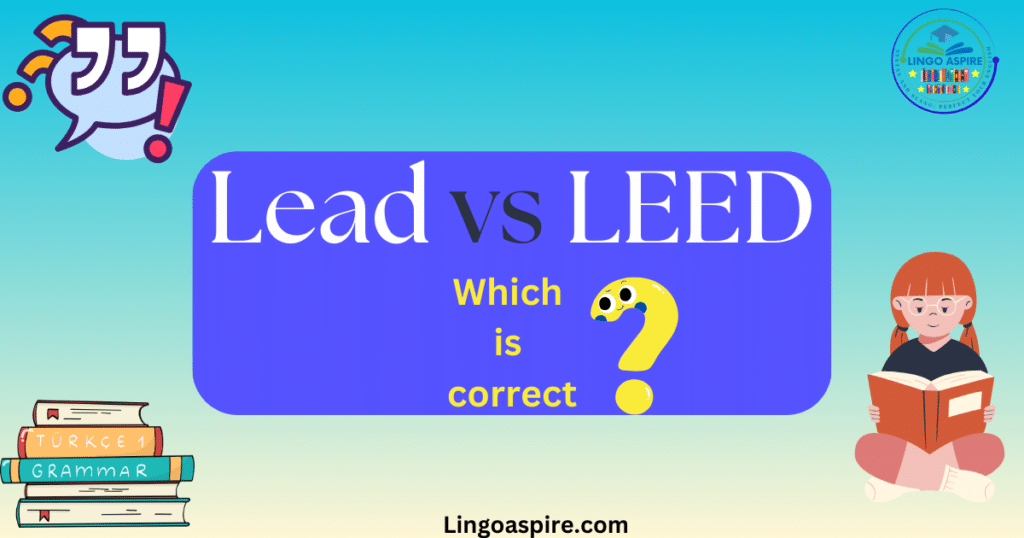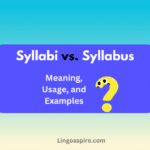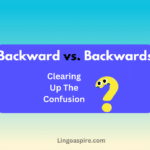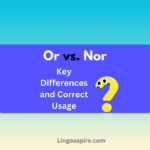When it comes to lead vs LEED, many people often confuse the two, especially when writing or speaking about them. While they may sound the same, their meanings are vastly different. Understanding when to use “lead” versus “LEED” is essential in various contexts, especially in fields like construction, sustainability, and business. This guide will help clear up the confusion and provide insights into each term’s origin, usage, and significance.
What Do “Lead vs LEED” Mean?
The word lead and the acronym LEED have very different meanings, despite their similar pronunciation. Each term is used in different contexts, which is why it’s important to know when to use which one.
Lead: A Heavy Metal and Leadership
Lead is a word that has multiple meanings, but it is most commonly known as a heavy metal. As a metal, it is a soft, toxic element that has been historically used in plumbing pipes, batteries, and paints. However, due to its harmful effects on health, the use of lead in household products has been restricted. Lead poisoning is a significant concern, especially for young children, as it can cause developmental delays, learning difficulties, and other health issues.
Apart from its use as a heavy metal, lead is also a verb, meaning to guide or direct. For example, a person can lead a team, a project, or a movement. Leadership is the act of influencing others to achieve a common goal, and it plays a crucial role in business, politics, and other fields. A leader is someone who takes charge, makes decisions, and inspires others to reach their goals.
LEED: Leadership in Energy and Environmental Design
On the other hand, LEED stands for Leadership in Energy and Environmental Design. It is a certification system that promotes sustainable building practices and green architecture. The system was developed by the U.S. Green Building Council (USGBC) and is used to assess the environmental performance of buildings. LEED-certified buildings are designed with eco-friendly materials, energy-efficient systems, and sustainable design principles.
The purpose of LEED is to encourage energy efficiency, environmental responsibility, and carbon footprint reduction in the construction and architecture industries. As the demand for eco-friendly construction grows, obtaining a LEED certification has become a mark of excellence in green building. Many companies today prefer LEED-certified buildings due to the long-term savings in energy costs, improved indoor air quality, and the overall environmental benefits.
Origins of “Lead vs LEED”
Understanding the origins of both lead and LEED can give us more context on their meanings and uses.
Origins of Lead
The word lead comes from the Old English word “lead,” which is related to the Latin “plumbum,” referring to the metal. Over time, lead became widely used in plumbing and other industrial applications due to its malleability and resistance to corrosion. However, as scientists discovered the health risks of lead exposure, particularly lead poisoning, its use in household items and plumbing has been significantly reduced. It’s important to note that lead pipes are still a concern in many older homes, where the potential for contamination remains a risk.
In addition to its use as a heavy metal, lead also became associated with leadership due to its metaphorical meaning of guiding or directing. Leading a group or a movement requires influence and authority, which makes the word applicable in many aspects of daily life. Over time, the concept of leadership has expanded into business, politics, and even family dynamics, where someone takes charge, motivates others, and pushes for success.
Origins of LEED
The term LEED was introduced in 1993 by the U.S. Green Building Council (USGBC) as part of a broader effort to promote sustainable architecture. The goal was to create a certification system that would encourage builders, architects, and developers to consider the environmental impact of their buildings. The LEED rating system evaluates various building components, including energy efficiency, water conservation, sustainable materials, and indoor air quality. Today, LEED certification is used worldwide, with over 100,000 projects seeking certification across various levels, from LEED-certified to LEED Platinum.
LEED’s focus is on improving energy efficiency, water conservation, and indoor environmental quality in buildings. By following LEED principles, buildings can become more sustainable, healthier, and cost-effective. For example, incorporating solar panels, wind turbines, green roofs, and low-VOC paints helps a building meet the criteria for LEED certification.
Lead vs LEED: When Should Each Be Used?
Understanding when to use lead or LEED can be tricky, but here are the general guidelines.
When to Use Lead
Use lead when referring to the heavy metal or when describing the act of guiding, directing, or being in charge. Here are some examples:
| Context | Example Usage |
|---|---|
| Lead as a Heavy Metal | “The pipes in this old house are made from lead.” This refers to the toxic metal commonly used in plumbing before its risks were fully understood. |
| Lead as Leadership | “She will lead the project to success.” This is the act of guiding a team toward a specific goal. |
| Lead in Sales Opportunities | “We are following up with our leads from the marketing campaign.” In business, leads refer to potential customers or clients who show interest in a product or service. |
When to Use LEED
Use LEED when talking about sustainable building practices, green architecture, or energy-efficient buildings. Here are some examples:
| Context | Example Usage |
|---|---|
| LEED in Green Building | “The new school building is LEED certified.” This indicates that the building has met specific LEED standards for sustainability and environmental performance. |
| LEED in Environmental Design | “The architects followed LEED principles to ensure the building is energy-efficient.” This highlights how the building design follows LEED guidelines to minimize its environmental impact. |
| LEED in Urban Planning | “Many new commercial spaces are being built with LEED certification in mind.” Here, the term emphasizes eco-friendly construction practices that consider sustainability in urban development. |
Examples in Context: Lead vs LEED
Now let’s take a look at how lead and LEED are used in real-world contexts.
Lead as a Heavy Metal
In the past, lead was used in plumbing pipes, paints, and gasoline. However, due to its toxicity, many countries have banned or restricted its use. Lead poisoning is a serious health concern, particularly for children, and it can cause developmental delays, hearing loss, and other long-term effects. In addition to lead pipes, lead is also found in old lead-acid batteries and some older household paints. Awareness of lead toxicity has led to global efforts to reduce its presence in consumer goods.
Lead in Leadership
When referring to leadership, lead is used to describe the act of guiding a group. For example, a leader in business, politics, or any other field is someone who takes charge, makes decisions, and inspires others. Leadership roles are essential in any organization, as they help determine the success or failure of a project. Good leaders possess the ability to motivate their team and steer them toward achieving goals, both in the short term and long term.
LEED in Sustainable Building Practices
LEED certification is an internationally recognized standard for green building. Buildings that receive LEED certification meet strict standards for energy efficiency, water conservation, and sustainable design. The goal is to reduce the environmental impact of construction and improve the health and well-being of those who live or work in the building. LEED-certified buildings are designed with eco-friendly materials and energy-saving systems like solar panels and wind turbines.
LEED in Urban Planning
LEED is also important in urban planning, where cities strive to incorporate sustainable development and green spaces. This includes initiatives like using solar panels, wind turbines, and green roofs to reduce energy consumption and increase the environmental performance of buildings and communities. By focusing on eco-friendly practices, cities can reduce urban sprawl and improve public transit systems. Additionally, green spaces and passive solar heating are integral parts of LEED urban planning, contributing to healthier and more livable cities.
LEED vs Lead: A Quick Comparison Table
| Aspect | Lead | LEED |
|---|---|---|
| Definition | A toxic metal or to guide and influence | A certification for sustainable buildings |
| Common Uses | Metal, leadership, sales leads | Sustainable building, green architecture, energy efficiency |
| Impact | Health risks, leadership roles | Environmental impact, energy efficiency, water conservation |
| Fields | Industrial applications, business, construction | Architecture, construction, urban planning |
| Examples | Lead poisoning, lead batteries, lead generation | LEED certified buildings, LEED standards |
A Final Look at Lead or LEED
In conclusion, knowing when to use lead and LEED is crucial for clear and effective communication. Lead can refer to the toxic metal or leadership, while LEED is specifically related to green building and sustainable development. It’s important to use the correct term in the right context to avoid confusion and convey your message clearly.
To summarize, use lead when talking about the heavy metal or when referring to someone who is guiding or influencing a group. Use LEED when discussing energy efficiency, environmental design, and sustainable construction practices. By using these terms correctly, you can ensure that your message is clear and precise.
Whether you’re working in construction, architecture, or business, understanding the difference between lead and LEED is essential. It helps prevent confusion and allows you to communicate more effectively in both professional and everyday settings. By following LEED principles and considering sustainable architecture and green building practices, you can contribute to a healthier environment and a more sustainable future.
Sources
Grammar Palette: These article explains the distinctions between “lead” and “LEED,” highlighting their meanings and appropriate contexts.
Cove Grammar: These resource offers a comprehensive breakdown of the various uses of “lead” and “LEED,” providing examples and clarifications.
Grammar Blend: This piece delves into the differences between “lead” and “LEED,” discussing their origins, meanings, and proper usage.







